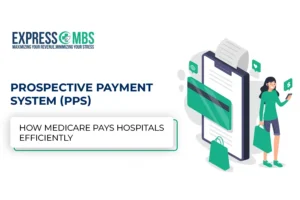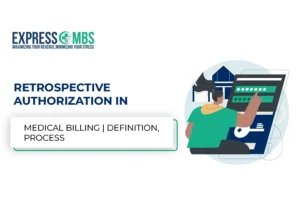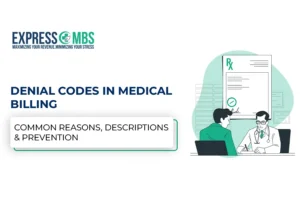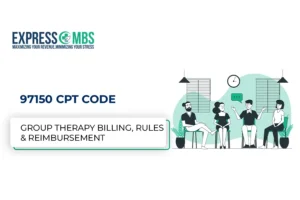
How to Bill CPT 17111 for 15+ Skin Lesion Removals

Removing benign skin lesions might seem straightforward in a clinical setting—but when it comes to billing, it often turns into a reimbursement headache. At Express Medical Billing, we’ve helped numerous providers recover lost revenue due to simple mistakes tied to CPT code 17111.
So, if you’re unsure about how to code for 15 or more non-cancerous lesion removals, this guide gives you a real-world breakdown, backed by expert insights.
What Is CPT Code 17111?
CPT 17111 is a procedure code used when a provider destroys 15 or more gentle skin lesions. These lesions do not include skin tags or cutaneous vascular growths. The methods of destruction can include:
- Cryotherapy (freezing)
- Laser ablation
- Chemosurgery
- Electrosurgery
- Surgical curettement
Important Note: CPT 17111 represents all 15+ lesions as a single unit. You don’t bill it per lesion, you bill once per session.
What CPT Code 17111 Does Not Include
To avoid billing denials, you need to understand what 17111 doesn’t cover:
- Skin tags: These are billed under a separate skin tag removal CPT code.
- Vascular lesions: Covered under different dermatology codes.
- Cosmetic procedures: If the removal is purely aesthetic, attach ICD-10 Z41.1 to indicate a cosmetic purpose, but be aware that most insurances won’t cover it.
Is CPT Code 17111 an Add-On Code?
No, CPT 17111 is a standalone code. It is not an add-on code like particular medical procedures. You can report it independently when applicable. However, if you are billing alongside another service (e.g., punch biopsy CPT or excisional biopsy CPT code), you may need to include modifiers for clarity.
Modifier Tips for CPT 17111
If you perform other disparate services throughout the same visit, you may necessity to use:
- Modifier 59 – to designate a distinct procedure.
- Modifier 25 – if an E/M service was also payable on the same day.
These modifiers are essential for justifying multiple services and avoiding claim bundling issues.
CPT 17111 vs. CPT 17110
Many providers accidentally bill cpt code 17110 instead of 17111, which leads to underbilling or claim denials. Here’s a simple comparison:
|
CPT Code |
Description |
Lesions Count |
|
17110 |
Destruction of benign lesions |
1–14 lesions |
|
17111 |
Destruction of benign lesions |
15+ lesions |
Tip: Never bill 17110 and 17111 together for the same area on the same day.
How to Ensure Medical Necessity
Reimbursement for CPT code 17111 requires medical necessity, not cosmetic intention. That’s why accurate ICD-10 coding is key. Use diagnosis codes like:
- D23.9 – Other benign neoplasm of skin, unspecified
- L82.1 – Other seborrheic keratosis
- L91.8 – Other hypertrophic disorders of skin
Cosmetic claims (Z41.1) are rarely reimbursed and often rejected unless you inform the patient beforehand.
CPT Code 17111 Reimbursement Insights
Reimbursement varies, but on average:
- Medicare pays around $110–$130
- Commercial insurers range widely depending on the plan and geographic location
At Express Medical Billing, we’ve helped providers appeal denied CPT 17111 claims and increase acceptance rates by ensuring correct code pairings, modifiers, and notes.
When Not to Use CPT 17111
Use caution when the following are true:
- Less than 15 lesions were treated → use CPT 17110
- The procedure was cosmetic → likely not covered
- You’re treating warts exclusively → use wart-specific codes
Also, don’t forget: if you’re coding for cry therapy wart treatments, CPT 17111 may still apply if the total lesion count is 15 or more non-skin-tag, non-vascular warts.
Common Real-World Billing Mistakes
Our team at Express Medical Billing has seen these common CPT 17111 errors:
- Improper lesion count: Billing 17111 for rarer than 15 lesions
- No modifiers: When billed with another dermatology procedure
- Using wrong diagnosis codes: Especially cosmetic ones
- Billing together 17110 and 17111 on the same claim
Avoiding these issues not only prevents claim denials, it also keeps your practice audit-ready.
Final Thoughts
CPT code 17111 may seem simple, but correct billing and documentation are key to getting paid. From modifiers to diagnosis pairing and cosmetic exclusions, there are several nuances to master.
Through Express Medical Billing on your side, you do not have to worry about navigating the difficulties alone. We help physicians and dermatology practices code confidently, get paid faster, and avoid denials altogether.
Need Help With CPT 17111 Billing?
Visit our Medical Coding Services and Physician Billing Services pages to learn how we can optimize your coding process and improve claim approval rates today.
Frequently Asked Questions (FAQs)
You should report CPT code 17111 when 15 or more benign skin lesions (excluding skin tags and vascular lesions) are destroyed in a single session. If you're treating fewer than 15, then use CPT 17110 instead. Counting lesions correctly is critical—many billing errors stem from misreporting the number treated.
Not typically. CPT 17111 is only reimbursable when the procedure is medically necessary. If you're removing benign lesions for cosmetic reasons, you must include a cosmetic ICD-10 code like Z41.1, and inform the patient in advance that insurance may not cover it.
Yes, sometimes. If CPT 17111 is performed on the same day as another unrelated procedure, like a punch biopsy or E/M service, you may need modifier -59 (distinct service) or modifier -25 (significant E/M) to avoid bundling or denial. Always review payer guidelines.
Only one unit of CPT 17111 should be billed, even if you destroy more than 15 lesions in a single visit. The code is not per lesion, but rather per session where 15+ qualifying benign lesions are treated.
Skin tags and cutaneous vascular lesions are not included in this code. These types of lesions have their own specific CPT codes and should not be grouped under 17111. Using this code incorrectly can lead to claim denials or payer audits.
ICD-10 codes that support medical necessity include:
- D23.9 – Other benign neoplasm of skin, unspecified
- L82.1 – Other seborrheic keratosis
- L91.8 – Other hypertrophic disorders of skin
Avoid using cosmetic-only codes unless the procedure is elective and the patient has been informed about out-of-pocket responsibility.
Recent Post



Denial Codes in Medical Billing – Complete Guide for Providers

